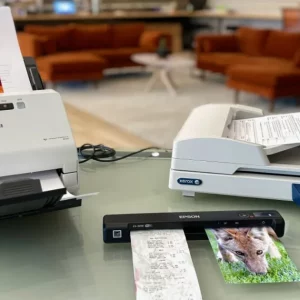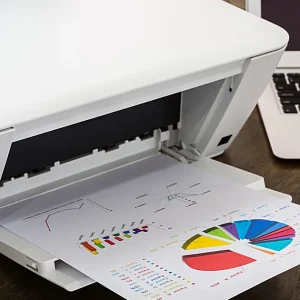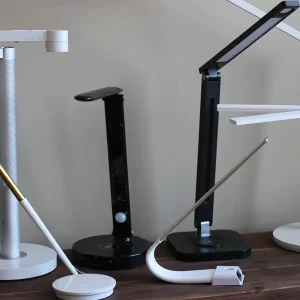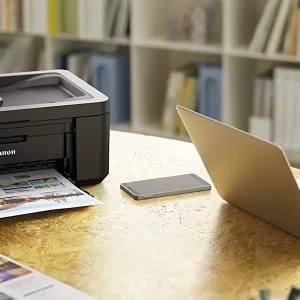CCD and CIS scanners are the two main types of scanners used in today’s market. Both have their own set of pros and cons that make them better or worse for different purposes. In this CCD vs CIS scanners, Manymoon will compare and contrast the two types of scanners in order to help you decide which one is right for you.
CCD Technology Scanner

CCD stands for Charged Coupled Device. This is the same type of imaging sensor used in a traditional digital camera. CCD uses an actual lens to reduce the image on the imaging sensor.
This is a great way to capture high-resolution details and a more expansive color space. CCD scanners are often preferred for high-quality images.
CCD scanners are the best choice for artistic and higher resolution graphics because of their fine detail. It is still common to find large format CCD scanners with the same scanner type used for AEC and technical scans.
Both CCD and CIS technologies have their merits. It is a matter of you applying which process will work best for your situation.
CCD scanning also offers a broader field of view. This is especially useful if you intend to scan many folded sheets. The CCD technology allows you to adjust fold lines through the scanning software so they don’t appear large in the scanned file. CCD scanners can also scan thick or “mounted” originals.

Advantages of CCD scanners
A fluorescent lamp light source has a high signal-to-noise ratio.
Cameras with apochromatic lense are relatively insensitive to a depth of focus.
Here are four reasons you should consider using CCD technology in a scanner, according to p4photel, an industry-leading website for technology websites.
Image Quality and Flexibility
CCD scanning technology can produce high-quality scans of virtually any document that fits the roll feed aperture.
CCD scanner technology can capture 16-bit grayscale (644,000 shades of grey) from original documents, whether engineering drawings, B&W photographs, or maps. For a sharper, clearer image, this process uses a monochrome channel.
CIS scanners, however, only provide an 8-bit grayscale (256 colors). There are some limitations, such as full-bleed graphics and direct copy to 8 or 12 color printers.
A CCD scanner is highly recommended for scanning GIS maps, paper with sharp edges, newspapers, and mylar films.
Productivity
Originals must be inserted face-down into CCD scanners. The imaging sensors are located underneath the scanning surface.
While some argue that face-up scanning is better for quality control, it really comes down to user training. Face-down scanning does not make it more difficult or less accurate.
CCD scanners can also support file transfer. These scanners can harness the full potential USB 3.0 file transfer. Users will experience almost zero waiting time when transferring files between images. A CCD scanner is the better choice if speed is your priority.
Color Fidelity
Camera-based technology has inherent technical advantages. The color gamut is more comprehensive, the color fidelity is higher, and the image noise is lower.
Cameras can capture 48-bit color, so printing and copying to 8-12 color printers yield better results than CIS. CCD scanners are superior in color depth and ability to detect the subtleties of gradients.
Scanning thick documents and folded documents
CCD scanners can scan mounted originals up to 60 inches thick, but most CIS scanners cannot.
This is because the optics of CIS technology don’t image uneven or raised surfaces well. The CIS fiber-optic array doesn’t offer a deep field. CIS scanners will not capture small details, such as fold marks, because they are sensitive. Use a CCD scanner if your documents have uneven surfaces, such as folded prints, for best results.
Disadvantages of CCD scanners
- Higher equipment cost
- Technology that is more complex and fragile
- Form factors more significant than CIS types
- Digital stitching multiple image fields is a common requirement.
- Lower optical resolution
- Sometimes, lens distortion can be a problem.
CIS Technology Scanner

Contact Imaging Sensor (CIS) is another type of scanning technology. Instead of using a standard lens to reduce the original image onto the sensor’s screen, CIS technology uses many fiber optic lenses to transfer that information to various sensors.
CIS technology is more affordable than traditional CCD models but can compromise image quality, particularly when scanning aerial photos and maps.
A CIS-based system requires less maintenance because there are no calibrating cameras, and software can control the sensors.
However, CIS will not image fold lines and wrinkles due to the low depth of field optics. CIS also reduces the information in color space.
CIS is not the best way to capture primary colors.
Keep in mind that although physical CIS technology is limited, many manufacturers have found a way to overcome these limitations by using sophisticated software that can compensate for CIS weaknesses.
Canon Color Image Logic is a great example, used by all Canon/Oce comprehensive format formats. Other manufacturers have also followed the example and released their cleaning software tools.
CIS versions can often be justified, mainly when budgets are tight. CIS scanners are the preferred scanner technology for anyone who needs blueprint scanners.
- Fastest and lightest mobile single sheet fed...
- Fast scans a single page in as fast as 5.5...
- Versatile paper handling scans documents upto 8.5...
- Smart tools to easily scan and organize documents...
- USB powered connect to your computer; No batteries...
- MANAGE HOME AND SMALL BUSINESS DOCUMENTS WITH...
- DOCUMENT MANAGEMENT AT YOUR COMMAND. Easily select...
- GREAT FOR YOU, GREAT FOR A TEAM. Users can select...
- WIRELESS CONNECTIVITY FOR CONVENIENCE. Built-in...
- PHOTO AND DOCUMENT ORGANIZATION MADE EFFORTLESS....
- STAY ORGANIZED – Easily convert your paper...
- CONVENIENT AND PORTABLE –lightweight and small...
- HANDLES VARIOUS MEDIA TYPES – Digitize receipts,...
- FAST AND EFFICIENT – No technical hurdles or...
- BROAD COMPATIBILITY – Works with both Windows...
- FAST SPEEDS - Scans color and black and white...
- ULTRA COMPACT – At less than 1 foot in length...
- READY WHENEVER YOU ARE – The DS-640 mobile...
- WORKS YOUR WAY – Use the Brother free...
- OPTIMIZE IMAGES AND TEXT – Automatic color...
- COMPACT DESIGN AND FAST SCAN SPEEDS HANDLE A...
- QUICK AND EASY SCANNING WITHOUT INSTALLING...
- EASY TO USE AND SAVES TIME: Scan documents to...
- COMPATIBLE WITH THE WAY YOU WORK: Supports...
- OPTIMIZE IMAGES AND TEXT: Enhance scans with...
- Scanner type: Document
- Connectivity technology: USB
- With Auto Scan Mode, the scanner automatically...
- Digitize documents and images
- Stay organized: Easily convert your paper...
- Reliably handles many different document types:...
- Fast and efficient: Scans both sides of a document...
- Broad compatibility: Windows and Mac TWAIN driver...
- Easy Setup: Simply connect to your computer using...
- Get organized in a snap — scan up to 35 ppm/70...
- Quickly scan stacks of paper — robust 50-sheet...
- Powerful software included — easy scanning with...
- Seamless integration with most software solutions...
- Easy sharing and collaboration — email or upload...
- Space saving operational design in the smallest of...
- Innovative and intelligent paper feeding...
- Lightning fast one touch paper-in, image-up...
- Scan anywhere you want whenever you want: Along...
- Preserve Photo Memories: Scan 4" x 6" photos in...
- Amazing image clarity and detail — 4800 dpi...
- Epson ScanSmart software included (4) — easily...
- One-touch scanning (2) — scan in fewer steps...
- Restore color to faded photos — with one click,...
- Scan books and photo albums — high-rise,...
Advantages of CIS scanners
- Lower Cost
- High reliability
- Compacter
- No sewing required
- Superior optical resolution
- No lens distortion
Disadvantages of CIS scanners
- Sensitive to focus on depth
- LED light sources have a lower signal-to-noise ratio
What about CMOS Sensors?
There is sometimes confusion between CDD and CMOS sensors. Both are based on apochromatic lenses that focus light onto the capturing sensor.
CMOS has made the status quo more common (Complementary Metal-Oxide Semiconductor). Their use in personal digital cameras is the main reason.
If you examine the specifications of any point-and-shoot or digital SLR camera, you will see that it usually has a CMOS device underneath. Both CMOS and CCD sensors start simultaneously, converting light to electrons. However, there are some differences.
- CCD is better for large document scanning
- CCD sensors create high-quality, low-noise images.
- CMOS usually produces more noise.
- The sensitivity to light of CMOS sensors is generally lower.
The CMOS sensors consume very little power. They are therefore great for handheld cameras. CCDs use much more control but produce fantastic images on the other side. The power-savings tradeoff between CCD-based large format scanners and stationary devices is irrelevant.
CCDs perform better in high-quality image environments. Scanner manufacturers have remained loyal to this technology rather than a CMOS sensor.
Calculate the savings of large format scanning jobs
Online calculator available for free
Calculate the projected revenue and costs of scanning jobs
Fully customizable to meet your needs
CCD vs CIS Scanners, Which One Should You Choose?
CIS is a good option if you work with CAD/GIS drawings. It is undoubtedly the most cost-effective solution. Furthermore, powerful software programs have made the difference between CCD (Cadillac) and CIS smaller.
A CCD scanner is the best choice if you have higher quality requirements, such as photos or fine art. You will get the best image quality. It will cost more initially, but the investment will pay off in the long run.



















